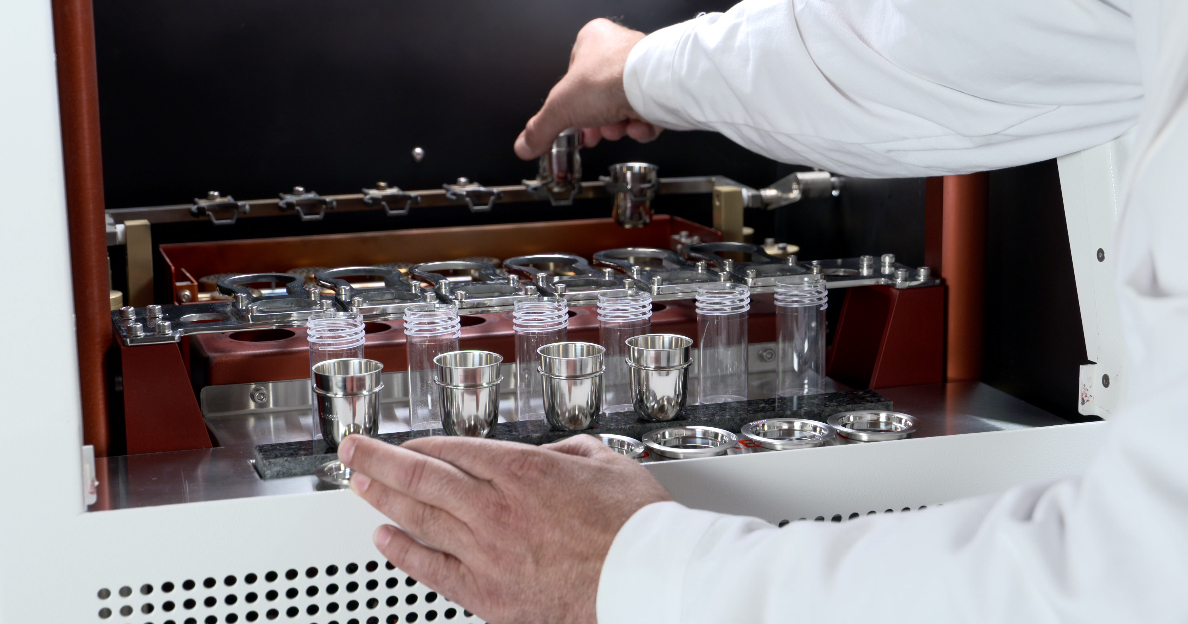What is a Crucible?
A crucible is a vessel used to melt substances, usually metallic elements, prior to casting. This demands extremely high-temperature resistance, plus outstanding chemical and physical stability. As a minimum, crucibles must have a melting point higher than that of the materials they contain. They must also be chemically compatible with melts otherwise there is a risk of reactions occurring between the vessel walls and the molten substance. This can lead to rapid crucible deterioration and melt contamination.
What are Crucibles Used for?
The word crucible is often used in a metaphorical sense to describe a severe situation whereby multiple elements interact to create something new. That is an apt description of the actual working principles of crucibles in industries and laboratories today.
Crucibles have been used for millennia to cast metals and to create alloys, by adding a combination of metallic powders or blanks and heating them to the point of melting. Some mechanical agitation may be induced to encourage mixing before the melt is poured into a mold, yielding boules, ingots, or semi-finished profiles. This crucible smelting process is also central to small-batch scrap metal recycling. Heavy-duty steel crucibles may be used in the secondary aluminum industry. However, steel crucibles are prone to scaling which may lead to contamination issues.
Meanwhile, the uses of laboratory crucibles run the gamut of scientific experimentation and preparation. Lab-grade crucibles are comprised of high-temperature materials which exhibit a marginal likelihood of contaminating the analyte. This is crucial in analytical chemistry and sample prep for trace and ultra-trace level determination of a sample’s constituents. Consequently, only inert high-temp materials like platinum or zirconium are suitable for scientific applications.

Different Types of Crucibles
Crucibles primarily differ by application, material, and profile—though some are distinguished by whether they use a cover/lid or not.
There are industrial and scientific crucibles with some crossover in certain industries where findings or processes must be validated by lab results. In which case, inert crucibles made of inert ceramics/metallic components will be used, rather than standard graphite or steel crucibles. These include platinum, zirconium, silicon carbide, and more. Some examples of platinum alloy crucibles include:
- Pure platinum crucibles, with a melting point above 1770°C;
- Platinum—rhodium alloys composed of 10%, or 3.5% rhodium, with a melting point of 1780-1850°C;
- Platinum—gold alloys comprising 5% gold, with a melting point approaching 1850°C
- Platinum—gold—rhodium composed of 5% gold and 5% rhodium, with exceptional combined properties.
Crucible geometries and profiles vary significantly, with different applications requiring different solutions. Read our article on the range of platinum crucibles for more insight into the differences between standard form crucibles and volatile matter crucibles.
Looking for Laboratory Crucibles?
At XRF Scientific, we supply premium labware for high-temperature sample preparations to various markets around the world. With years of experience supplying platinum crucibles for analytical chemistry workflows, we are confident our range of products satisfies the needs of users operating a range of crucible furnaces and instrumentation. We have also introduced a new line of zirconium crucibles, which introduce unprecedented levels of physiochemical stability to analytical fusion. Explore our zirconium crucibles to learn more.









